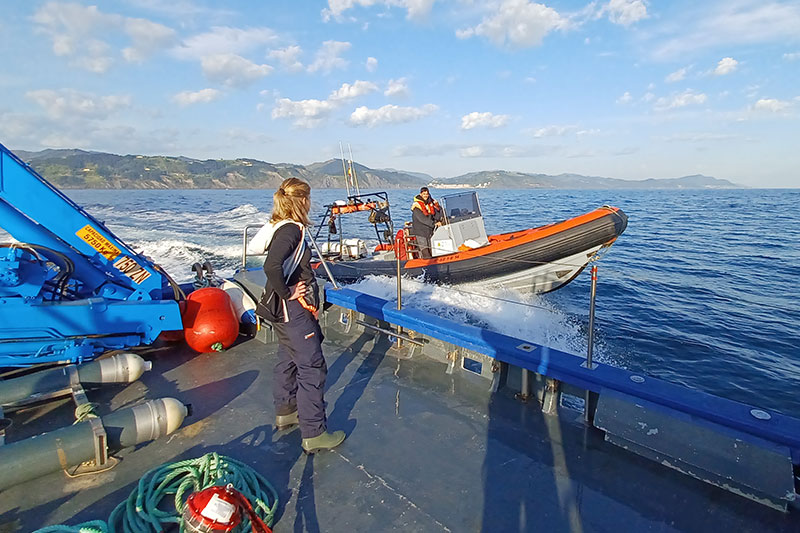The project
Objectives
- To advance in the study of oceanic dynamic structures and their influence on the transport of substances, in particular floating marine litter and sinking microplastics.
- To develop a highly accurate and widely validated three-dimensional suite of numerical models, and obtain from them the three-dimensional characterization and dynamics of geometric structures and transport connectivity patterns.
- To apply and validate these studies with in-situ data of marine litter and microplastics in the BoB and the WMS.

Components
A combination of theoretical treatment, marine data collection from various sources, numerical models and controlled experiments will be used. The project is structured in six basic components which are the following:
High resolution 3-dimensional ocean modelling.
Study of horizontal transport structures and connectivity patterns at different scales.
Study of 3-dimensional transport structures and connectivity patterns.
Impact of the 3-dimensional properties of transport on the dispersion and distribution of sinking microplastics and floating marine litter.
Multiplatform experiments to assess the accuracy and validate the developed approaches.
Use of machine-learning techniques to forecast the paths and final fate of marine litter and microplastics.
What is the 3-d geometry of the ocean turbulent flow? What are the patterns of connectivity in three dimensions? Can we infer ocean interior subduction processes from ocean surface features?
What is the contribution of the small-scale motions derived from the ageostrophic secondary circulation to the mixing and dispersal properties as well as to the connectivity patterns?
How do sinking microplastics move? Which of these Lagrangian properties (transport barriers, connectivity patterns, convergence structures, mixing, retention, etc.) can improve the identification of microplastic accumulation zones on the surface, in the water column and on the seabed?
What happens in coastal areas? What are the effects of mean currents and their turbulent fields on vertical flow in the interior of the coastal ocean?
How can we progress in the monitoring of marine litter aggregation structures?
What is the contribution of the different dynamical scales (from mesoscale to small scales) to the aggregation, propagation and loads (absolute and relative to the environmental waters) of marine litter hotspots, slicks or windrows?